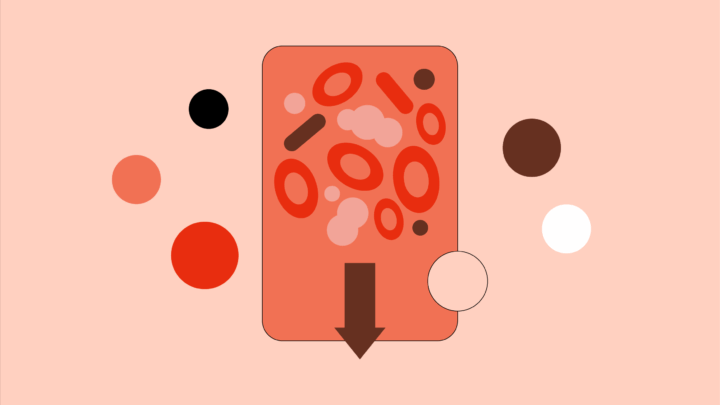
CAR-T therapy, a groundbreaking innovation in cancer treatment, has revolutionized the management of certain blood cancers. By genetically engineering a patient’s T-cells to target cancer cells, it offers hope where other treatments have failed.
The CAR-T approach has earned significant acclaim. While 38% of surveyed physicians on Sermo view CAR-T therapy as a promising step toward potentially curative treatments, 26% remain skeptical, and 22% are neutral.1 What fuels this uncertainty?
While CAR-T therapy has led to remarkable success stories, it’s not without limitations. Failures, adverse side effects and barriers to accessibility leave room for concern. This article examines precisely what the Sermo community makes of this treatment.
Understanding the challenges for physicians when CAR-T therapy fails
CAR-T therapy has multifaceted challenges, ranging from biological limitations to accessibility hurdles. For physicians, the following obstacles create significant difficulties in delivering consistent and effective outcomes.
Long-term safety
Long-term safety remains a major concern for CAR-T therapy.
A Sermo poll revealed only 27% of oncologists are very confident in its safety, while 34% are confident, 28% are somewhat confident and 7% slightly confident. Additionally, 4% expressed no confidence at all.1
The risk of severe side effects, such as cytokine release syndrome (CRS) and immune effector cell-associated neurotoxicity syndrome (ICANS), underscores the need for cautious optimism.2
In a discussion about its long-term viability, a Sermo member specializing in Hematology Oncology noted that “CAR-T therapy can be challenging and is more immunosuppressive ultimately than auto transplants,3“. Another pediatrician on Sermo highlighted its dual nature, stating that “CAR-T cell use can be associated with severe and even life-threatening side effects, but these toxicities must be viewed in the context of the risk-benefit ratio.3“
While its benefits are undeniable, cautious optimism is necessary as physicians weigh its life-saving potential against the risks and continue to advocate for advancements to improve its safety profile.

Accessibility and cost
Accessibility is one of the most significant barriers to CAR-T therapy. Only 20% of eligible patients can access this life-saving treatment due to its complex manufacturing, administration and high costs.4
“Just because Medicare will ‘cover’ something doesn’t mean the patient will find a facility or physician to provide it. Medicare covertly rations the treatment,3” explained a Sermo member certified in Family Medicine. Another doctor questioned, “Which facilities will get paid to do it?3“, pointing to systemic inequities.
On cost, CAR-T therapy often comes with a price tag exceeding $400,000 per session,5 with total costs, including hospitalization and related care, potentially exceeding $1 million. These figures amplify calls for better regulation. “The problem isn’t with innovative therapies that save lives! The problem is that drug companies have the unchecked authority in the US to price their treatment in any ridiculous way they choose,3” noted another physician on Sermo.
Despite these challenges, 45% of Sermo oncologists believe the costs are justified by CAR-T’s outcomes. However, 38% say it depends on the case and 20% don’t believe the costs are reasonable.1 For many, it raises ethical dilemmas about equity and the prioritization of healthcare spending.
Therefore, the prohibitive cost of CAR-T therapy and its limited availability highlight a critical need for systemic changes to improve accessibility and affordability.
Healthcare system preparedness
The logistical challenges of CAR-T therapy often overwhelm healthcare systems. When asked about preparedness, 32% of physicians on Sermo disagreed, stating the system is underprepared, while 23% strongly disagreed. Only 16% agreed that the healthcare system is equipped to manage the complexities of CAR-T therapy, with the remaining 29% unsure.1
“Needs are endless, especially in healthcare. To control cost, plan and limit expenditure,3” suggested a Sermo member specializing in Internal Medicine. Another Internal Medicine doctor emphasized the importance of clear strategies: “How’s a company supposed to price a therapy?3” This sentiment underscores the need for collaborative efforts between policymakers, healthcare professionals and manufacturers to streamline CAR-T implementation.
Training and education
Adequate training for CAR-T therapy is another challenge.
According to Sermo data, only 15% strongly agree that education and training are excellent, while 24% agree they’re adequate. A notable 30% are neutral, indicating significant room for improvement, and 21% disagree that training meets the necessary standards.1
“Not sure there’s sufficient education about CAR-T therapy, especially in developing countries,6” noted one General Surgeon. Education gaps not only hinder the therapy’s effectiveness but also impact its safety. Therefore, bridging education gaps is crucial to ensuring the effective and safe use of CAR-T therapy, particularly in resource-limited settings.
Post-CAR-T therapy options: what have been the next steps for Sermo oncologists?
What happens when CAR-T therapy fails?
When they experience CAR-T therapy failure, oncologists must navigate a complex set of options to tailor the next steps for their patients. Insights from Sermo’s physician-only community reveal a practical focus on leveraging cutting-edge treatments, patient-specific strategies and innovative research.

Exploring second infusions and immunotherapy
For some patients, a second CAR-T infusion is considered if the initial treatment showed partial efficacy or if CAR-T cells were rapidly depleted.
As one GP notes, “Current advances in immunotherapy and personalized medicine, especially CAR-T 19 therapy, are promising and warrant continued investigation.3”
This optimism underscores the potential of refining CAR-T therapies or complementing them with bispecific antibodies like epcoritamab, which enhances T-cell recognition of tumor cells.
CAR-T therapy next steps: clinical trials as a pathway
When existing treatments fall short, clinical trials offer patients access to experimental options.
A Sermo Oncology member reflects, “Cancer patients are often more willing to accept new treatments and clinical trials, particularly when mainstream therapies seem inadequate.3”
This openness to innovation not only expands treatment possibilities but also drives progress in developing therapies that may benefit future patients.
Managing CAR-T therapy failure: hematopoietic stem cell transplants
For patients with aggressive lymphomas or refractory cancers, hematopoietic stem cell transplants remain a viable curative option.
As a GP points out, “Stem cell transplantation is typically reserved for aggressive cases after incomplete remission or recurrence.3”
While intensive, these transplants offer hope for patients who have exhausted less invasive alternatives.
How do physicians balance treatment and quality of life?
For 68% of Sermo oncologists, the primary goal is to regain control of the disease, halt tumor progression and restore responsiveness to therapy, which is critical for improving patient outcomes. Meanwhile, 18% focus on maintaining quality of life, ensuring treatments minimize side effects and align with the patient’s lifestyle. Another 11% prioritize overcoming resistance to initial therapies, seeking innovative solutions to address treatment failure.7
Long-term follow-up is another critical element, with physicians screening for secondary cancers and monitoring physical, cognitive and psychological well-being. About 20% of patients experience persistent symptoms,8 prompting individualized care plans to address these challenges.
Sermo oncologists agree that balancing effective treatment with quality of life requires tailored approaches, psychological support and transparent communication to empower patients in their care decisions.

Your takeaway
CAR-T therapy offers groundbreaking potential but faces challenges in safety, accessibility and costs.
When it fails, options include second infusions, immunotherapies and clinical trials – often requiring personalized strategies.
Sermo physicians strive to balance effective treatments with patients’ quality of life, emphasizing ongoing innovation, education and systemic reforms to enhance affordability, accessibility and care outcomes.
Join the conversation on Sermo
Stay at the forefront of cutting-edge cancer treatments like CAR-T therapy by joining the conversation on Sermo, a global community of physicians sharing insights and strategies and solutions for overcoming challenges in modern oncology.
Footnotes
- Sermo, 2024. Do CAR-Ts Need Redesign? Cell Therapy’s Rocky Road to Success. Sermo Community [Private online forum].
- Sermo, 2024. CAR-T Cells Cure Patients with Leukemia, Say Doctors. Sermo Community [Private online forum].
- Sermo member, 2024. Comment on CAR-T Cells Cure Patients with Leukemia, Say Doctors. Sermo Community [Private online forum].
- College of American Pathologists (CAP), 2024. CAR-T cells: Therapies, opportunities, and challenges.
- Author(s), 2024. Title of the article. JNCI Cancer Spectrum, 8(4)
- Sermo member, 2024. Comment on Do CAR-Ts Need Redesign? Cell Therapy’s Rocky Road to Success. Sermo Community [Private online forum].
- Sermo, 2024. Poll of the Week: How Do You Manage Treatment for HR+/HER2- Advanced Breast Cancer Patients? [Dataset 1337073]. Sermo Community.
- American Society of Hematology (ASH), 2023. A promising outlook: CAR-T cells improve patient quality of life.















